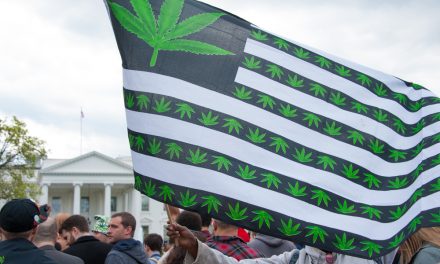In today’s Roaring ’20s video, I discuss:
- Why Disney is one of the most valuable and globally influential companies in the world.
- The copyright laws that have been critical to companies such as Disney that emerged in the 1920s.
- How Disney has changed enormously over the last 100 years.
To watch my new video, click the play button below…
The House of Mouse is approaching its centenary … and a significant milestone in the evolution of its media empire.
Brothers Walt and Roy O. Disney founded The Walt Disney Co. (NYSE: DIS) on October 16, 1923 … right in the middle of the Roaring ’20s.
 It’s hard to think of a culture company more globally influential than Disney.
It’s hard to think of a culture company more globally influential than Disney.
More people are aware of Mickey Mouse, who debuted in 1928’s “Steamboat Willie,” than Santa Claus. Mickey and his cartoon companions have defined the U.S. for the rest of the world since the 1920s.
They’ve also made Disney one of the most valuable companies in the world.
The Walt Disney Company (as Walt Disney Productions) went public on November 12, 1957. The stock closed at $13.87.
Today it’s worth 10 times as much, with millions more shares outstanding.
Disney has had its ups and downs over the last 100 years. But it’s always had one thing on its side that kept its profits secure … until now.
Mickey’s Friends in High Places
Mickey Mouse is about to enter the modern media economy … in fact, Disney’s leap from the 1920s to the 2020s is on his tab.
He’s had a lot of help from Congress.
You see, historically, Disney’s profits from its many movies were trivial compared to the income it received from its “associated properties” — aka merchandise.
That includes physical representations of Disney characters — toys, theme parks and so on — as well as pictures, recordings and written descriptions.
All are protected under U.S. copyright laws written by Congress. Those laws have been critical to Disney and other U.S. companies that emerged during the 1920s — a decade that saw a shift in the role of copyright in American capitalism.
The advent of mass-market movies, radio and then television meant that “intangible property” like Mickey Mouse acquired massive value. Copyright allowed Disney and other companies to protect and monetize that value.
But copyright isn’t meant to be perpetual.
The common-law formulation was that it should protect the inventor and two subsequent generations. Then the copyrighted property enters the public domain.
Mickey Mouse was born in 1928. The 1909 Copyright Act entitled him to 56 years of copyright protection. It was set to expire in 1984.
By that time, Mickey was worth billions annually. Losing him to the public domain would kill Disney.
So the company began lobbying Congress for new copyright legislation.
In 1976, eight years before Mickey’s copyright demise, Congress overhauled U.S. law to expand corporate copyrights for works published after 1922 — including Mickey — from 56 to 75 years. Thanks to his friends in Congress, Mickey Mouse would rake in profits until 2003.
But the mid-’90s loomed. In addition to Mickey’s copyright demise, Pluto was set to expire in 2005, Goofy in 2007 and Donald Duck in 2009.
Disney again cranked up its lobbying machine.
In 1997, Congress introduced the Copyright Term Extension Act to extend corporate copyrights from 75 to 95 years. To ensure its passage, Disney’s political action committee paid out hundreds of thousands in contributions to those considering the bill. Of the bill’s 25 sponsors, 19 received money from Disney’s former CEO, Michael Eisner.
Former Senate Majority Leader Trent Lott, R-M.S., got $1,000 on the day he signed as a co-sponsor. Needless to say, Mickey acquired another lease on life.
In 1998, Mickey Mouse’s copyright was extended another 20 years, to 2023 … just in time for his 100th birthday:

2023: Armageddon for Disney?
By continually extending corporate copyright, Congress had essentially guaranteed Disney’s profits for most of the last century.
But 2023 is only four years away. Will Disney crank up the lobbying machinery yet again?
Probably not … because Mickey is now the paterfamilias financing his progeny’s own careers.
Disney has changed enormously since the turn of the century. From a producer of children’s cartoons about rodents, princesses and fairies, the House of Mouse has become a media behemoth catering to all ages and tastes.
After CEO Bob Iger took over in 2005, Disney used the revenue streams from 1920s-era properties such as Mickey to acquire numerous film and TV studios and their own media properties.
Starting with Pixar in 2006, Disney has bought the Muppets, Lucasfilm’s Star Wars and the blockbuster-producing Marvel Studios, amongst others.
In March this year, Disney acquired the media properties of Rupert Murdoch’s 21st Century Fox group. That was the biggest group of U.S. movie and TV holdings not already under Disney control.
Disney’s share price reacted approvingly:

Rodent-Free Profits for the Roaring 2020s
Disney is now organized into four divisions: Studio Entertainment, Media Networks, Direct-to-Consumer & International, and Parks, Experiences & Products.
Only one — the last — depends on Mickey and his brethren. The rest are forward-facing media properties such as The Avengers that will bring in billions.
To ensure this, Disney has rapidly positioned itself in the modern entertainment space by creating a new Disney Plus streaming service and buying out its partners in Hulu, an existing service.
Disney has Mickey Mouse to thank for this … and his friends in Congress.
Disney took the enormous revenue created by continual extensions of copyright on Roaring ’20s-era characters such as Mickey and used them to acquire new media properties that will guarantee even larger profits in the Roaring 2020s.
Clever stuff from the House of Mouse. And a perfect illustration of how intellectual property has shaped the course of American capitalism in the past … and will continue to do so in the Roaring 2020s.
Kind regards,

Ted Bauman
Editor, The Bauman Letter









